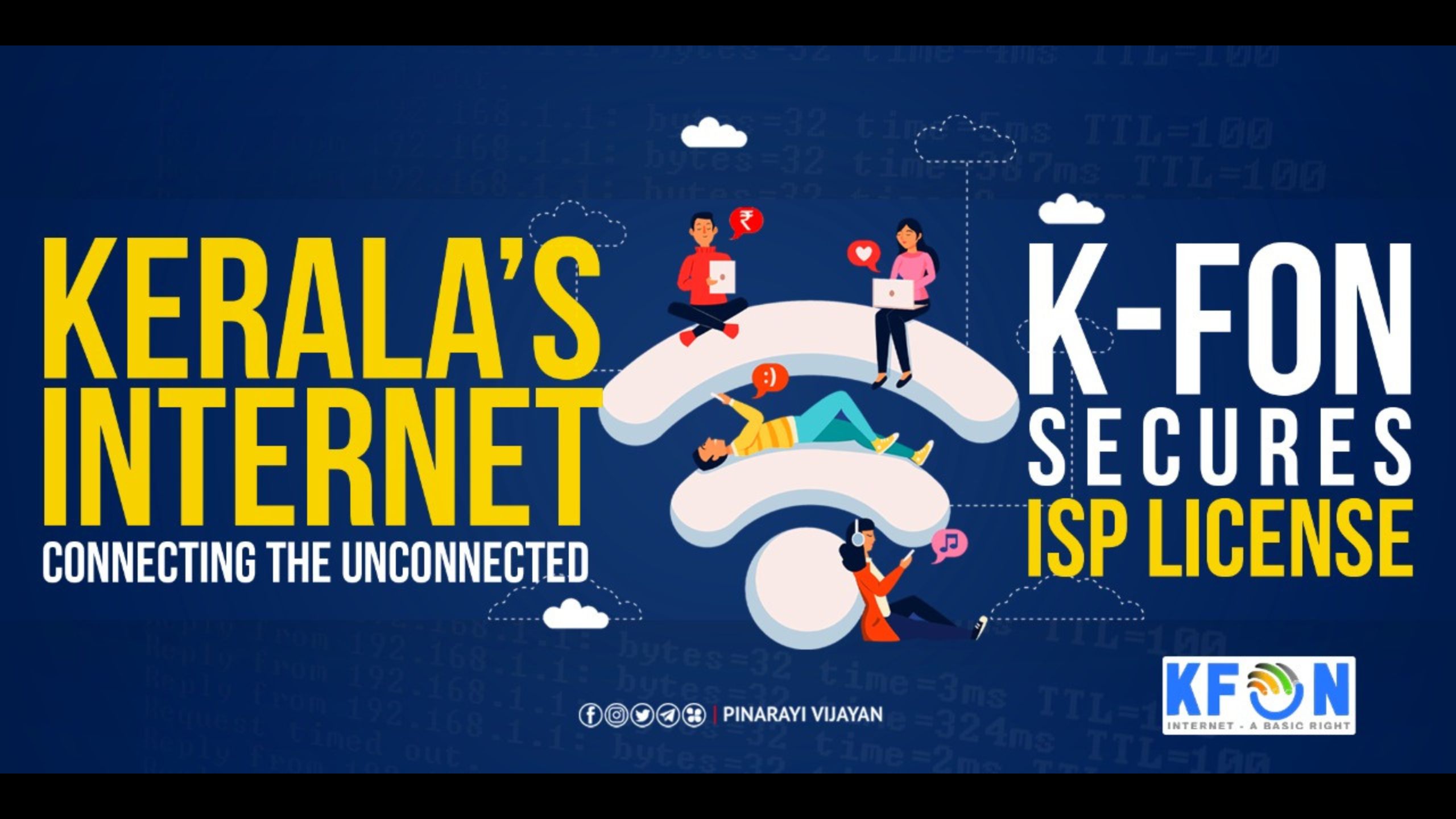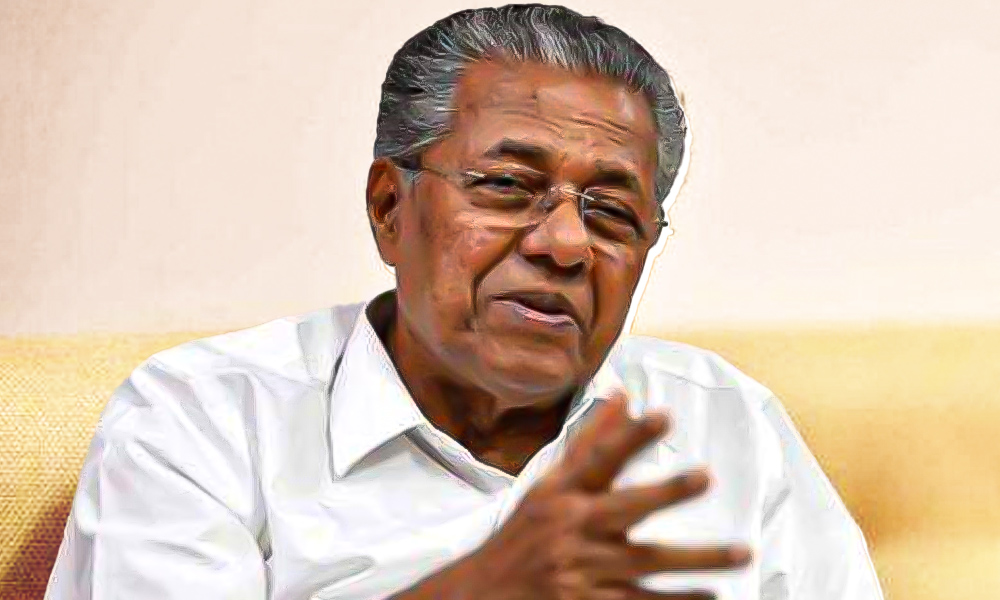Kerala Becomes 1st State To Have Own Broadband Service- The True Kerala Story During Weak Promises Of Digital India
Kerala becomes the first state to have its own broadband service called Kerala Fibre Optic Network for improving internet accessibility to every person living there without differentiation

Kerala, under the leadership of chief minister Pinarayi Vijayan, became the first state on Monday to officially launch the state government’s own broadband service, known as the “Kerala Fibre Optic Network,” or K-FON. The endeavour represents a state-run effort in order to increase public access to the internet.
This proclamation followed the Department of Telecommunications’ granting of an Internet Service Provider (ISP) license to the massive IT infrastructure development initiative of the Kerala Fibre Optic Network Ltd, which aims to supply every person in the region with the ability to use the internet.
With this, the initiative aimed at reducing the digital divide among the people could begin with full swing, according to the CM. As a replacement to the corporate-run telecommunications market, Vijayan launched K-FON. According to him, the action would be successful to narrow the technological divide by releasing the public from the exploitative practices of privately owned and profit-centric cable networks and mobile service providers.

Objectives of K-FON
- Establish a central network infrastructure (information highway) that every supplier of services may use without restriction in order to fill the connection gap.
- Establish a dependable, safe, and expandable network that links all government agencies, academic institutions, medical facilities, and other entities.
- Collaborate with multiple system administrators, telecom service suppliers, as well as internet service providers to offer economically disadvantaged families free internet access.
Highlighting the true side of Kerala–
The chief minister praised the initiative as a crucial milestone in Kerala’s transition to a knowledge economy and the promotion of an innovation-driven society when introducing the new service and argued for universal internet access. No person was going to be left behind and all individuals would have the opportunity to be component of the real story of Kerala, according to the chief minister, by enabling connection in areas via K-FON, which include areas even like Idamalakudy which are present in the heart of the forest.
This assertion appears to be an obvious reference to the highly popular Bollywood film “The Kerala Story,” which was promoted as a factual story. While the movie erroneously claimed that hundreds of Hindu women from Kerala had been forced to convert their religion to Islam and then made a part of ISIS, it was in reality based primarily upon the basic tenets of the Hindutva conspiracy theory of Love Jihad.
The CM took this significant action to detract attention from such misleading advertising and demonstrate the truth of Kerala‘s success and government-led efforts.
Authorities associated with K-FON
Bishwanath Sinha, Additional Chief Secretary, E&IT, Kerala State Government; Snehil Kumar Singh, Director, Kerala State IT Mission; and Santhosh Babu, MD, Kerala State Information Technology Infrastructure Ltd. make up the board of directors for K-Fon. Stakeholders with the initiative consist of the Kerala State Electricity Board Limited, Bharat Electronics Limited, Kerala Infrastructure Investment Fund Board, and KSITI.
Need for K-FON
The CM delivered an observation about the shift in workplace culture brought on by the Covid-19 epidemic, in which working from home has become the norm. Work from home, near home, as well as away from home are becoming more common. There should be greater internet access across the state if young people are to profit from these new methods of operation. According to him, the KFON is intended to guarantee the existence of this facility.

Estimated reach of K-FON
By August 2023, the initiative’s first stage will be over, and it will be further developed and expanded in order to establish commercial links. In the initial year of operation, 2,50,000 business connections are anticipated to be established.
The Telecom Regulatory Authority of India (TRAI) advised against preferential treatment for any service provider or business category, which is the guiding philosophy for the creation of K-FON.
Expectations with K-FON
The KFON initiative is designed to give BPL households as well as thirty thousand offices of government access to the internet for free. Additionally, Kerala’s Chief Minister, Pinarayi Vijayan, proclaimed internet access to be a fundamental right of the state’s citizens.
The network can be used by any supplier at any stage of their company category, which includes telecommunications service suppliers, internet service suppliers, multiple system administrators, and local cable administrators, in order to make up for the connectivity gaps within their core networks with no need to be concerned regarding achieving the onerous right of way or RoW and pricey CAPEX requirements, according to the state authorities.
The fact that these neighborhood-level networks may connect to K-Fon and provide connectivity and amenities to areas with limited access that might otherwise prove to be commercially unappealing to major providers is also important.
The government is of the opinion that such a perspective may lead market forces to step in and increase competition in order to provide residents with better connection services.
The K-FON network is going to function as a solid platform that supports government-to-government, government-to-citizen, and business-to-citizen contacts, corresponding to the K-FON website.
While employing the K-FON infrastructure, the state is interested in providing internet access for free to financially underprivileged families and subsidized internet to others in order to fulfil its objectives. In order to do this, it plans to construct a state-wide fundamental optical fibre network that is going to connect in excess of 30,000 government agencies.
In accordance to the website, more and more neighborhoods can create secure local networks which can connect to the K-FON network as they advance towards the idea of providing free internet for residents. The Antyodaya lists and BPL cards are still being used to determine who is eligible for free internet. The state government may now launch the initiative to close the digital disparity as the DoT has given K-FON the go-ahead.
In addition to eliminating the digital disparity, K-FON will strengthen the state’s current telecom ecosystem and serve as the ideal catalyst for making Kerala a Gigabit Economy, as stated on its official website.
Additionally, it is claimed that TSPs, ISPs, and cable operators might make use of this infrastructure in order to offer homes more beneficial and cheap internet access. Additionally, it is anticipated to promote local small and medium-sized businesses, companies with technological infrastructure, and the IT as well as electronics sectors, all of which will contribute to economic development.
The government anticipates that K-FON will additionally contribute significantly to the delivery of distance learning, the creation of jobs, the provision of remote accessibility to medical care, the promotion of development of infrastructure, the dissemination of data with regard to e-governance along with agricultural issues, and encouraging the development of inventions.
Furthermore, the concerned officials anticipate that K-FON could assist the state prepare itself to win the race since the net speeds required in order to catch up to 5G would also be significantly greater when it becomes widespread throughout India.
K-FON will eventually be capable to provide connectivity to the almost 8,000+ mobile towers throughout Kerala, greatly improving the quality of mobile calls and speeding up the transition to 4G/5G. According to the website, over eighty percent of the state’s towers are at present not fiberized and still employ radio, which poses a problem for the spread of 4G/5G and one that will additionally be resolved by K-FON.
According to Vijayan, providing everyone with accessibility to the internet is necessary to stay up with the pace of change in the global community. Through K-FON, he claims they are laying the foundation for Kerala to become a “Knowledge Economy” and “Innovation society”. He said that by doing so, they will link Kerala to Global Information Highway while also laying the groundwork for a brand-new Kerala with international scope.
The CM added that there were actually individuals in Kerala who had been staunchly against any form of advancement within the region, while taking a dig at the opposing UDF headed by the Congress. The Congress-led UDF abstained from the unveiling of Kerala’s fibre optic network, prompting such comments from the CM. The endeavor was denounced by those in opposition on the basis that it had been corruptly carried out and the implementation was not properly done.
In a news conference conducted in Kochi, V D Satheesan, the head of the opposition from the state assembly, claimed that the optical fibres were really purchased via China and subsequently rebranded, not produced in India. He further claimed that corruption occurred throughout the project’s execution. According to the CM, the opposition’s stance has an influence on both the state as well as the people, but it does not really impact the government or its stance.
It is refreshing to see at least some Indian politicians working towards real technological development along with economic progress of their state, instead of big inflated promises. Like it is said, Actions always speak louder than words. Therefore, no matter what kind of misinformation is produced, Kerala’s actual tale can be seen in the state’s development and government’s endeavors!





